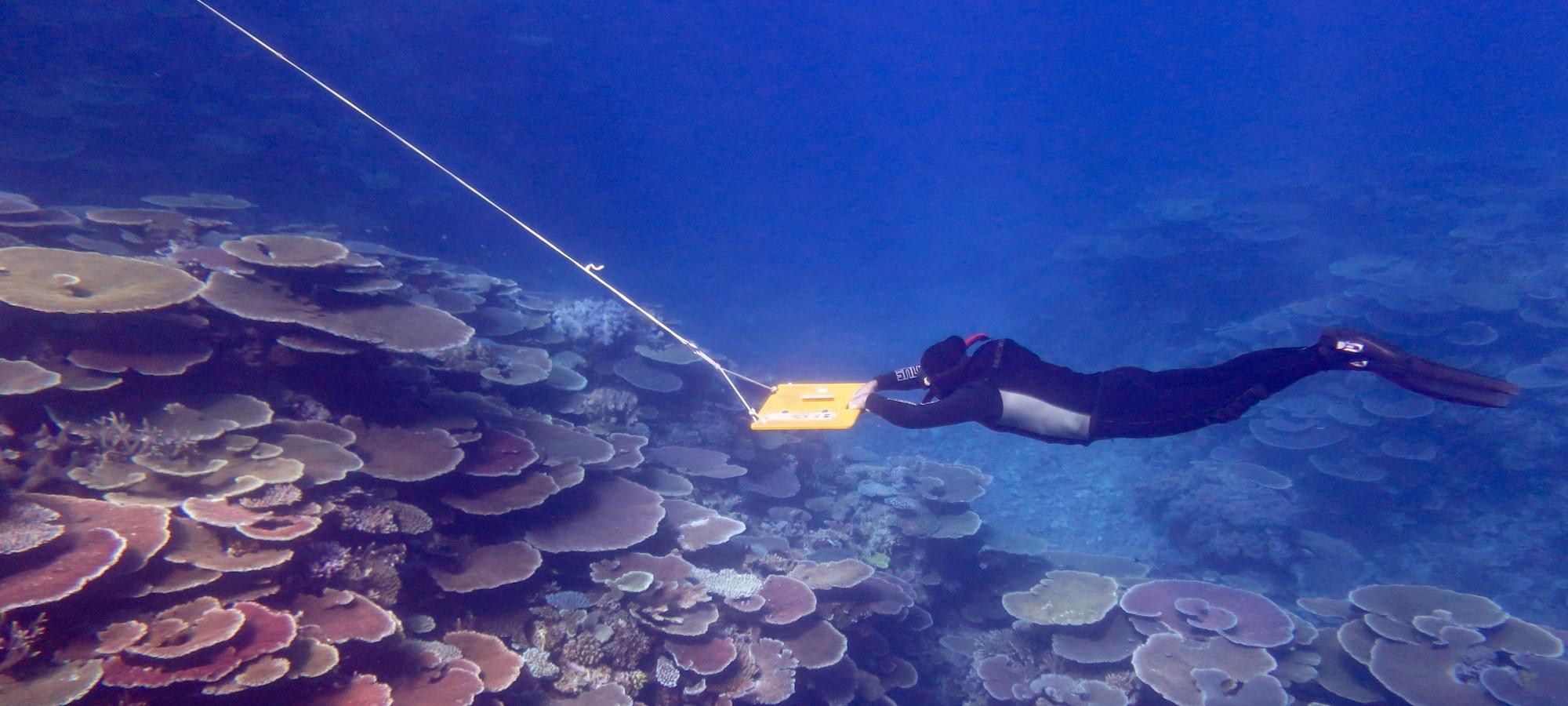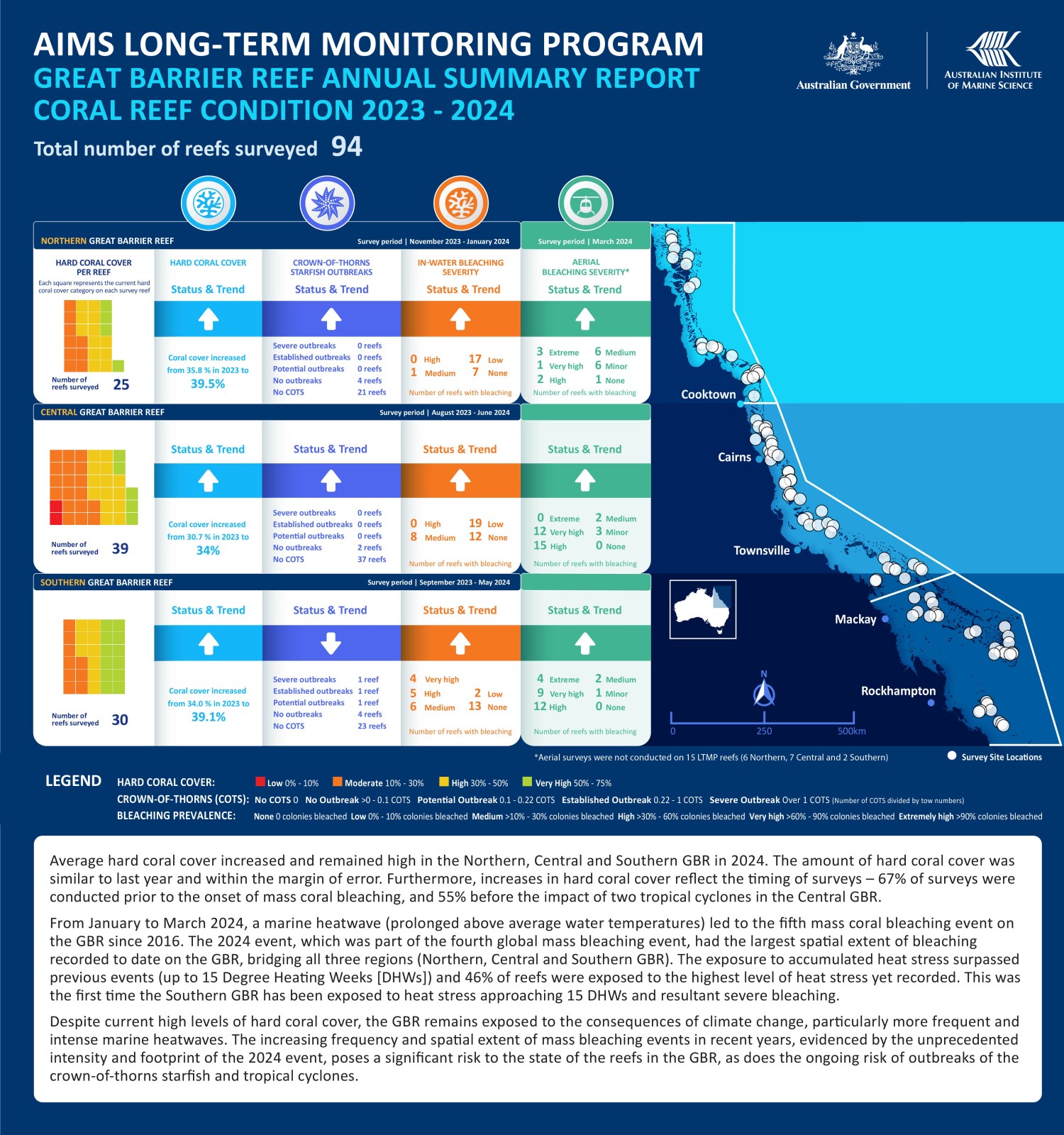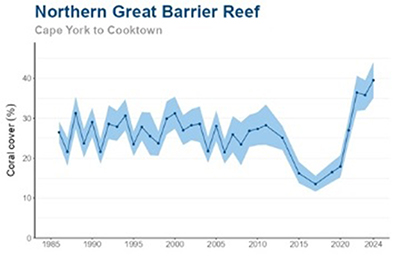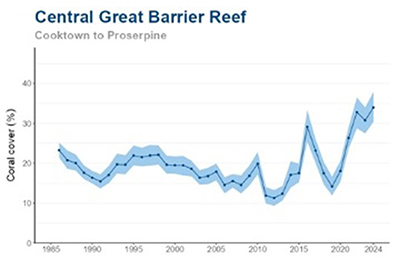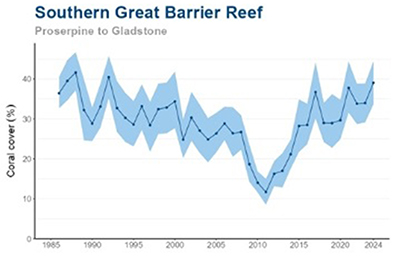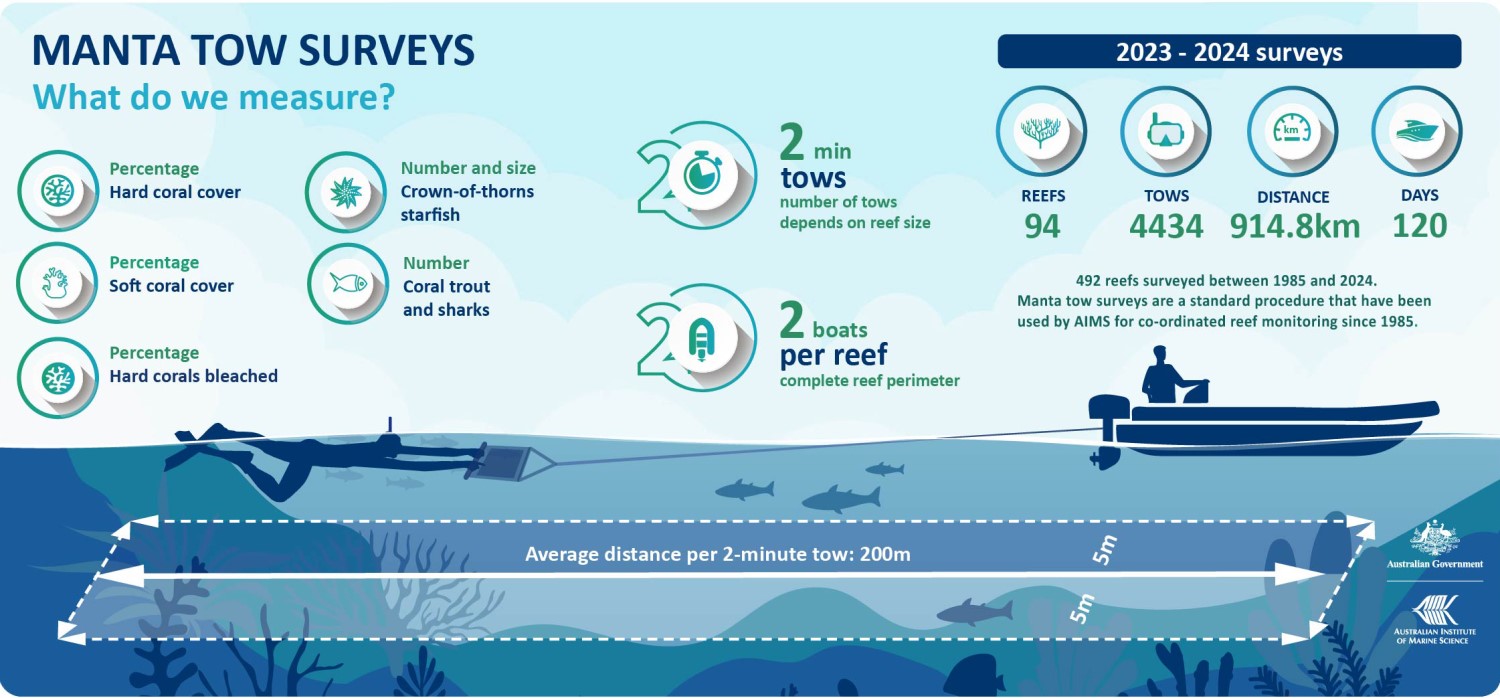Long-Term Monitoring Program
Annual Summary Report of Coral Reef Condition 2023/24
Coral cover remains high while impacts of mass coral bleaching yet to be determined
Published 7th August 2024
NOTE - The most recent Great Barrier Reef Annual Summary Report of Coral Reef Condition is available via our Reef Reports Hub.
Download the 2023-2024 report | 6.47MB
In short
- This report summarises the condition of coral reefs in the Northern, Central and Southern Great Barrier Reef (GBR) from the Long-Term Monitoring Program (LTMP) surveys of 94 reefs conducted between August 2023 and June 2024 (reported as ‘2024’).
- Over the past 38 years of monitoring by the Australian Institute of Marine Science (AIMS), hard coral cover on reefs of the GBR has decreased and increased in response to cycles of disturbance and recovery.
- Percent hard coral cover is one standard measure of reef condition recorded by scientists worldwide, it provides a simple and robust measure of reef health and is used in this report. Other important data, such as diversity or composition of coral assemblages, are collected and reported by LTMP in other ways.
- Changes in coral cover are qualified with respect to the margin of error, defined by 95% credible intervals (CIs). Credible intervals describe the level of uncertainty in the estimates of hard coral cover.
- Above-average water temperatures (i.e. sea-surface temperature anomalies of 1–2.5°C) occurred on the GBR over the austral summer, peaking in March 2024 and resulting in the fifth mass coral bleaching event since 2016.
- The mass coral bleaching on the GBR was part of a global event declared by NOAA and ICRI in April 2024.
- The Central GBR was impacted by two tropical cyclones: Cyclone Jasper (Category 5 – December 2023) and Cyclone Kirrily (Category 3 – January 2024). Although Cyclone Jasper was a Category 5 in the Coral Sea, it was only Category 2 when traversing the GBR.
- Crown-of-thorns starfish (COTS) outbreaks have persisted on four Southern GBR reefs, while four reefs of the Northern GBR have low numbers of starfish.
- In 2024, hard coral cover has increased across the GBR, but regional hard coral cover remains similar to that reported in 2022 and 2023. Importantly, most surveys were conducted prior to the mass coral bleaching event and passage of two cyclones, and the full impact of these events is yet to be determined. It's also important to note that bleached coral is still recorded as live coral during surveys, and the fate of these corals is not yet known.
- Of the 94 reefs surveyed, only two reefs had hard coral cover <10%, 36 reefs had hard coral cover between 10% and 30%, and 35 reefs had coral cover between 30% and 50%. The remaining 21 reefs had hard coral cover between 50% and 75%.
- On the Northern GBR, region-wide average hard coral cover increased to 39.5% (35.0% – 44.0% CIs), a regional high, but remained within the margin of error of 2023 (35.8% average; 32.1% – 39.5% CIs). All surveys were completed prior to the peak heat stress which occurred in March 2024.
- On the Central GBR, region-wide average hard coral cover increased to 34.0% (30.3% – 37.9% CIs), a regional high but remained within the margin of error of 2023 (30.7% average; 27.5% – 34.0% CIs). Twenty-three of 39 reefs were surveyed before the peak heat stress which occurred in March 2024, while 17 reefs were surveyed before cyclone impacts.
- On the Southern GBR, region-wide average hard coral cover increased to 39.1% (33.7% to 44.5% CIs) from 34.0% (29.1% – 38.9% CIs) in 2023. Fourteen of 30 reefs were surveyed prior to the peak heat stress in March 2024.
- The high coral cover reported this year is good news but does not mean all is fine on the GBR as it continues to face cumulative stressors. 2024 saw the fifth mass coral bleaching event since 2016 with the largest spatial footprint of coral bleaching yet recorded, coupled with the impact of two tropical cyclones. The impacts on coral cover from these events are partially captured in this year's report. A full assessment of changes in coral cover following these disturbances will be recorded during the next survey season.
- It is important to note that recent increases in hard coral cover can be quickly undone, as many corals are susceptible to elevated heat stress, wave damage and crown-of-thorns starfish predation, all of which impacted the GBR this year.
- The results presented here are our best understanding of reef condition before the impact of summer’s disturbances.
Download the 2023-2024 report | 6.47MB
More information
- Download the 2023-2024 Report
- Take a 'Quick Look' at the 2023-2024 results
- Read the media release
- Learn more about AIMS Long-Term Monitoring Program
- Visit the Reef Dashboard for data on individual reefs and sectors
- Access the data: AIMS Long-Term Monitoring Program: Crown-Of-Thorns Starfish And Benthos Manta Tow Data (Great Barrier Reef)
- Contact media@aims.gov.au

